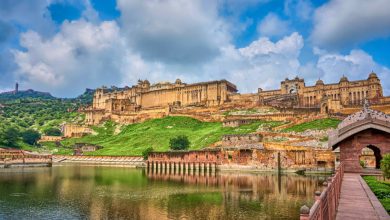Thailand’s Top Temples to Visit in 2025 for an Authentic Cultural Experience

Thailand, with its rich history and culture, is famous for its temples. They hold a deep spiritual heritage. These temples hold much history. From ancient, intricate architecture to serene, sacred grounds. Each visit reveals the soul of Thailand. Head there in 2025 and find the best Thai temples for a culturally significant tour.
Also Read: A Cultural Journey: Must-Visit Temples in Thailand for 2025!
Wat Pho, Bangkok
It is a temple in the heart of Bangkok. It is famous for its 46-meter-long, gold-leaf-covered, beautiful Reclining Buddha. This temple is a place of worship. It also serves as a traditional Thai massage parlor. Visitors can sit, relax, and enjoy the temple’s peaceful ambiance.
Cultural Significance: It is one of the places from where authentic Thai massage has its history; it was in the 16th century.
Visitor Tips:
- Dress modestly, covering your shoulders and knees.
- Be there early, avoiding large crowds and noise.
- Do not miss the fine murals and stone inscriptions dotting the temple complex throughout.
Wat Arun (Temple of Dawn), Bangkok
It has some of the most beautiful Khmer-style architecture in town, as it is a riverside temple. Its spire, called a prang, is embedded with colorful porcelain and seashells. They form beautiful patterns. This makes it one of Bangkok’s prettier sites. It’s best appreciated at sunrise and sunset when it glows with golden light.
Cultural Significance: Wat Arun shows a rich history and a series of restorations that symbolize power and resilience in a sense to the Thai people.
Visitor Tips:
- Boat ride over the Chao Phraya River for panoramic views of the temple.
- Ascend the steep stairs of the central spire for panoramic views.
- Visit during the early morning for fewer tourists and stunning sunrise photography.
Wat Phra Kaew (Temple of the Emerald Buddha), Bangkok
The most sacred temple in Thailand is known as Wat Phra Kaew or the Temple of the Emerald Buddha. The statue contained in this temple is one of the most revered carvings made from a single piece of jade. This is one of the most beautiful architecture and historical sites in the Grand Palace complex that everyone must see.
Cultural Significance: The temple was of paramount importance to Thai history and royal ceremonies; therefore, its cultural significance was of great importance as a symbol of national identity.
Visitor Tips:
- Allow sufficient time to explore the whole complex of the Grand Palace.
- Be respectful and quiet because it is a holy site.
- Check for temple ceremonies or events that could make your visit more exciting.
Also Read: Top 5 Reasons Indian Tourists Love Traveling to Vietnam and Thailand
Wat Chedi Luang, Chiang Mai
This magnificent structure is situated right in the heart of Chiang Mai. Here, there is an example of Lanna architecture and the remains of an enormous chedi that at one time was 82 meters tall. The temple complex offers a quiet place to reflect on its history and grand architecture.
Cultural Significance: This temple was constructed in the 14th century, but the Emerald Buddha was transferred from here to Bangkok.
Visitor Tips:
- Visit early in the morning or late afternoon to avoid the heat.
- Take a monk chat session to learn about Buddhism and the local culture.
- The surrounding area, comprises markets and local shops.
Wat Doi Suthep, Chiang Mai
The Wat Doi Suthep temple sits atop Doi Suthep Mountain. It epitomizes the summit’s splendor and offers stunning views of Chiang Mai. The golden stupa is considered an iconic feature and a prominent place of pilgrimage for Buddhism.
Cultural Significance: This building is from the 14th century and, by belief, was erected to hold the relic of the Buddha.
Visitor Tips:
- Temple: 306-step climb to the temple can be very rewarding.
- At sunrise or sunset, the pictures are stunning.
- This is a sacred site; it is usually kept with shawls at the entrance, so dress appropriately.
Wat Rong Khun (White Temple), Chiang Rai
The modern, white temple is called Wat Rong Khun or White Temple. It was created by the artist Chalermchai Kositpipat who decorated it with white as a symbol of purity and beautiful designs of Buddhist teachings and modern art.
Cultural Significance: It is actually a temple that serves as an artistic creation in the fusion of religious expression and innovation in contemporary creativity, so it differs significantly from other temples within Thailand.
Visitor Tips:
- Visit in the morning to avoid full places.
- Its sculptures and artworks are so mild.
- Pictures are allowed, but the holy nature of the ground requires proper respect.
Conclusion
This journey into the history, spirituality, and artistry of this country is the search for temples in Thailand. It allows the culture to be understood in a more reflective and educational way through each temple. Choose Thailand Tour Packages for a deeper and more immersive way of seeing the wonders of Thailand. These magnificent sites include those in a memorable and culturally immersed experience within this enchanting country. Whether you like ancient traditions or modern artistry, Thailand’s temples will surely take a piece of your heart





